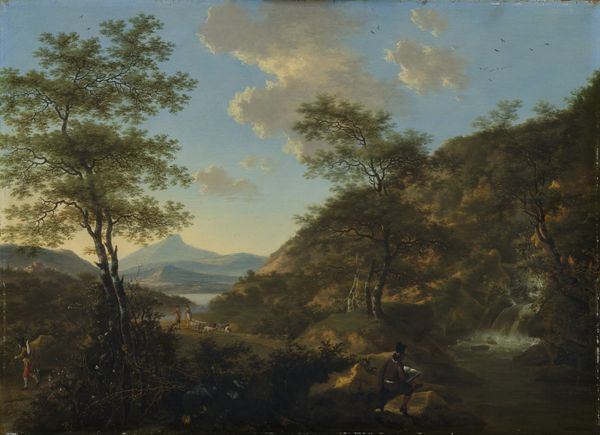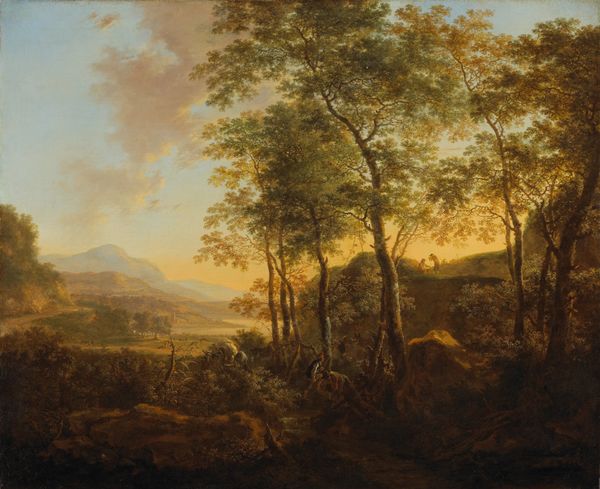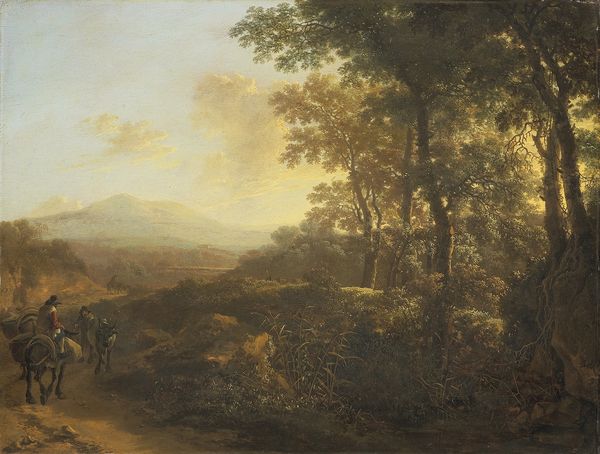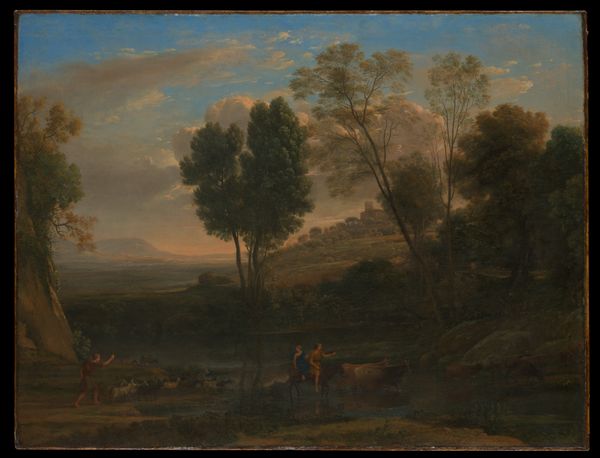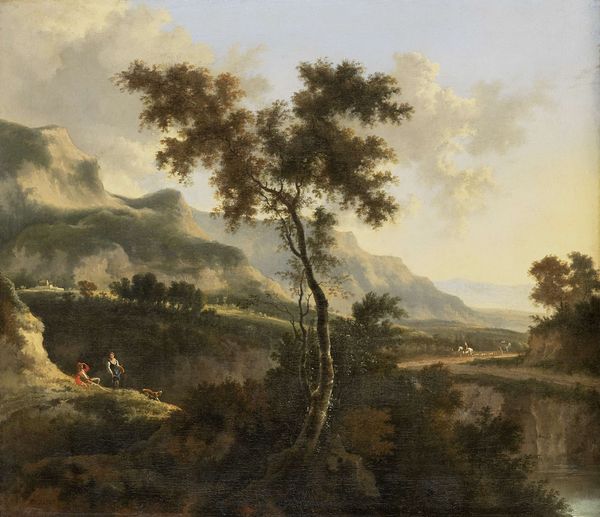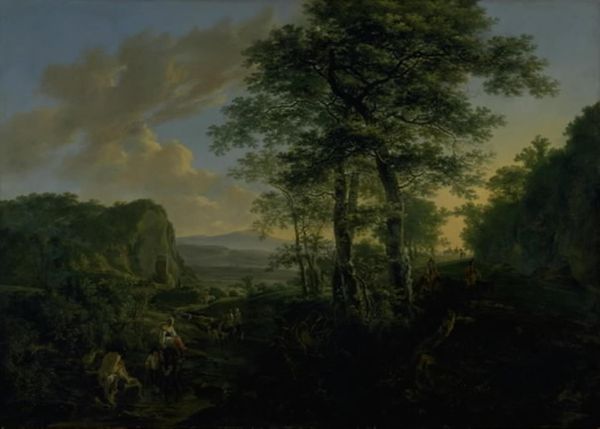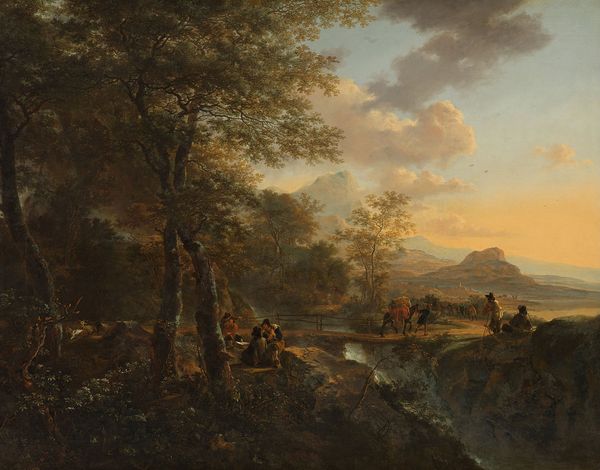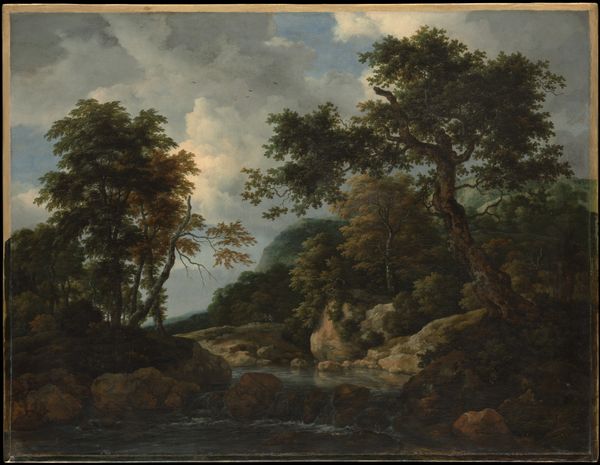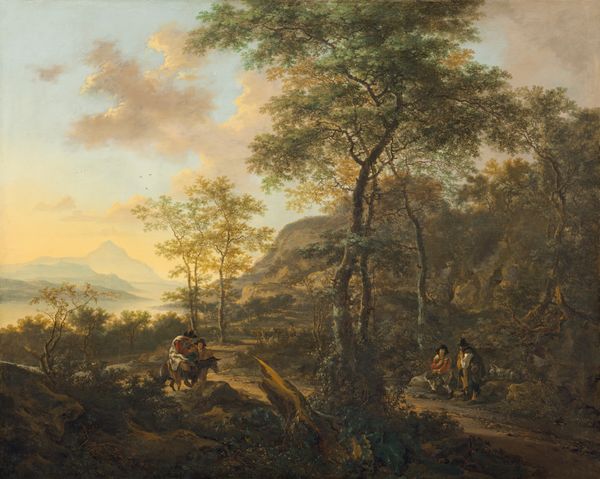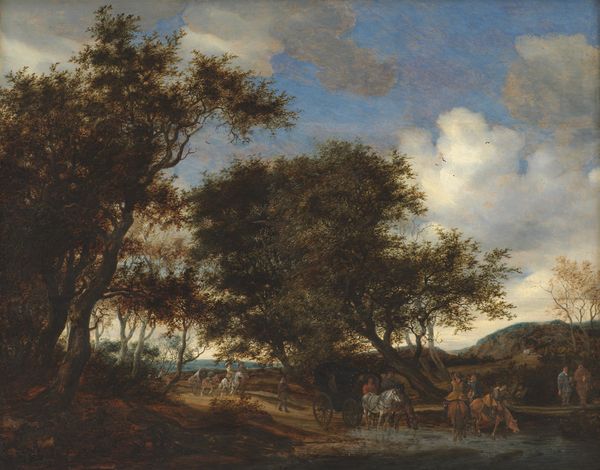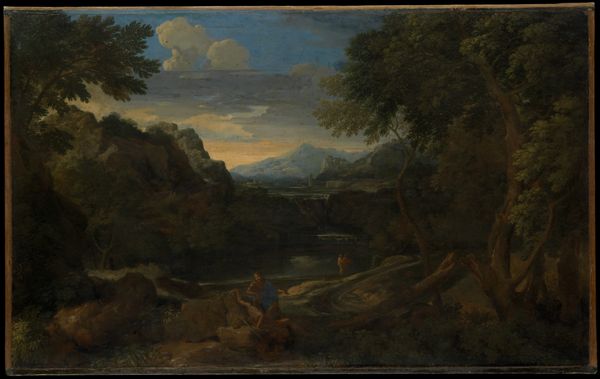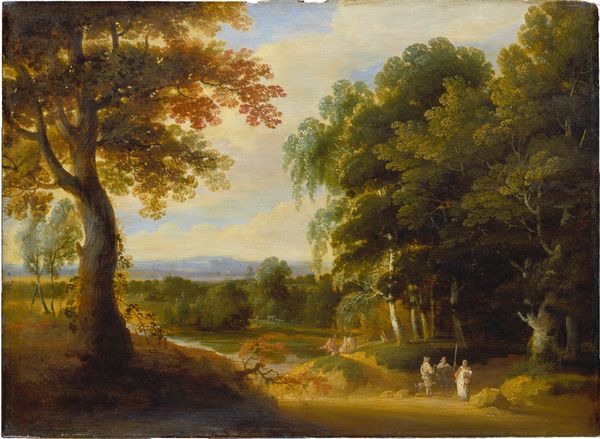
painting, plein-air, oil-paint, oil-on-canvas
#
painting
#
plein-air
#
oil-paint
#
landscape
#
romanticism
#
oil-on-canvas
#
realism
Dimensions: 54.5 × 78.7 cm (21 1/2 × 31 in.)
Copyright: Public Domain
Editor: Here we have Joshua Shaw’s oil on canvas, *Solitude*, painted around 1818. I find the composition so calming. All that nature, the vastness of the landscape... What do you see in this piece? Curator: Immediately, I see a powerful statement about humanity's relationship with the natural world, particularly through a post-colonial lens. The figures are dwarfed by this expansive landscape, aren't they? Shaw’s decision to showcase their smallness prompts some critical questions about agency. Editor: Agency? Can you expand on that? Curator: Of course. Consider this painting’s historical context. It was produced at a time when the myth of the American frontier was solidifying, a time built upon stolen indigenous land. By minimizing the human presence, is Shaw subtly critiquing the notion of human dominance over nature, especially in a nation predicated on its violent control of both land and people? Is the “solitude” enjoyed in the painting even truly possible without this violence? Editor: I never thought about it that way, actually. I was focusing on how pretty it is, how serene, but framing it as a critique of colonialism… I get it now. Curator: Exactly. The painting itself becomes a site of contestation, a visual dialogue between beauty and historical awareness. Think of how this idyll is also an ideological space! How do we, as viewers in the 21st century, contend with enjoying the aesthetics of a work that might carry troubling undercurrents? Editor: So, enjoying its beauty requires acknowledging its history. Thanks, that gives me a lot to consider. Curator: And that intersection of aesthetic enjoyment and historical consciousness, that is precisely where art sparks meaningful social change.
Comments
No comments
Be the first to comment and join the conversation on the ultimate creative platform.
